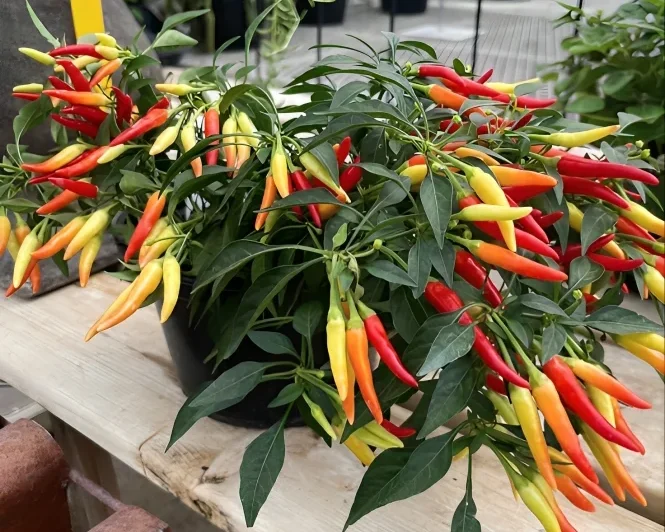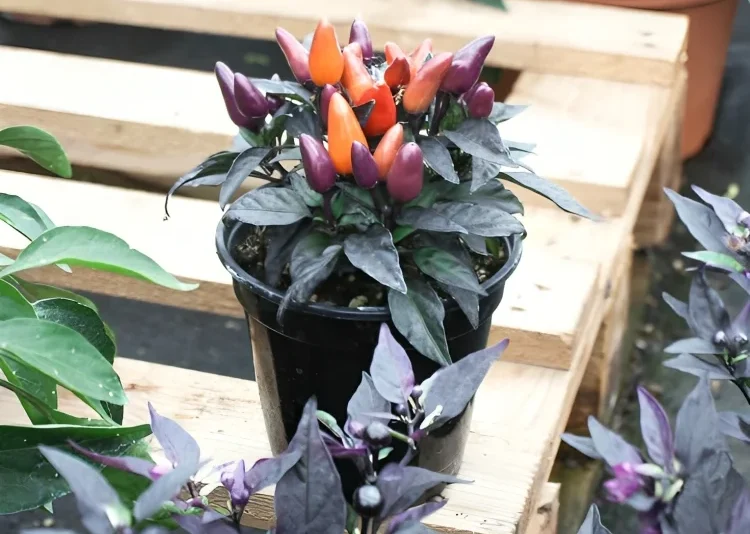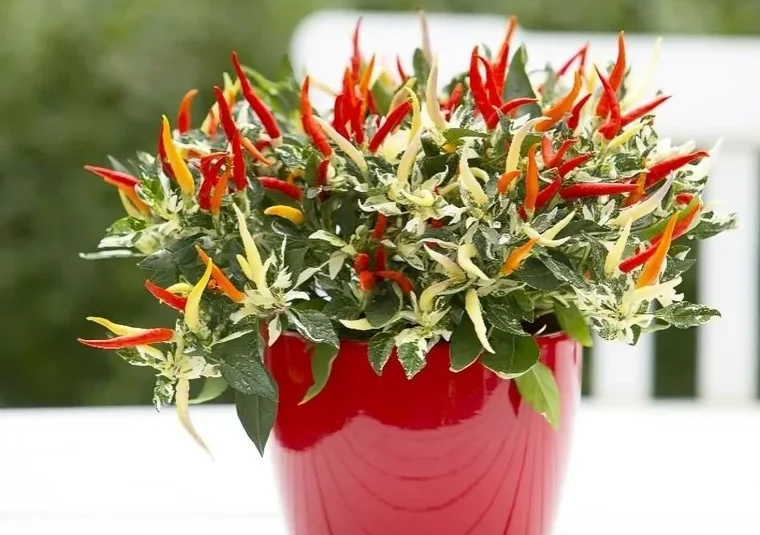Decorative peppers brighten patios, gardens, and indoor pots with vibrant colors. However, many gardeners still ask: are decorative pepper plants edible? The short answer is yes, because their fruits are technically edible. Yet they are not always tasty, since flavor often leans bitter or fiery. Moreover, the leaves and stems are unsafe, and therefore, they should never be consumed.
Because clarity is important, understanding their uses, risks, and varieties truly matters. In addition, knowing which ornamental peppers are safe helps you enjoy them confidently. Although they are not grown for culinary value, they can still add spice and novelty. Consequently, with proper care and moderation, decorative peppers can shift from being mere décor to becoming unique ingredients in creative dishes.
What Are Decorative Pepper Plants?

Decorative peppers, also called ornamental peppers, are small varieties of Capsicum annuum. They are bred for looks rather than flavor. Their peppers come in shades of red, orange, purple, yellow, and even black. Because of this bold color palette, they are popular in landscaping, table displays, and seasonal décor.
Although they look different from common chili peppers, they belong to the same family. Therefore, their fruits contain capsaicin, the same compound that makes hot peppers spicy.
Are Decorative Pepper Plants Edible?
Yes, decorative pepper plants are edible, but only their fruits should be consumed. However, the peppers are often extremely hot or bitter, and therefore they are used sparingly. While safe in small amounts, their leaves and stems are not edible.
The Fruits of Decorative Pepper Plants: Edible but Handle with Caution
Decorative pepper plants produce edible fruits, although they differ from culinary types. However, these fruits often appear smaller, pack more heat, and offer far less flavor. Many people describe their taste as grassy, sharp, or even bitter. Because of their intense heat, people rarely eat them in large amounts. Instead, cooks use them as garnishes, pickled accents, or conversation pieces.
Different ornamental varieties—such as Black Pearl, Numex Twilight, and Chinese Five Color—offer striking looks but extreme spiciness. While these peppers brighten dishes visually, they can easily overwhelm taste buds. Therefore, approach them with moderation. Similarly, always wash the fruits thoroughly, especially if growers applied chemical sprays. Consequently, while these peppers add beauty and novelty, people should use them sparingly in cooking.
The Leaves and Stems of Decorative Pepper Plants: Unsafe to Eat

Unlike the fruits, decorative pepper leaves and stems are not edible. Although some related Capsicum species offer edible leaves when cooked, most ornamental varieties remain unsuitable. These parts contain compounds that irritate the digestive system and can cause discomfort. Therefore, only the colorful fruits provide safe, cautious culinary use.
Moreover, eating stems or leaves offers no flavor benefit and instead poses unnecessary risk. Pesticides or fertilizers applied to ornamental plants may linger in these tissues. While the bright fruits invite curiosity, avoid the green parts entirely.
Gardeners interested in safe indoor plants can learn more about non-toxic alternatives like Chinese evergreen here. Consequently, gardeners and home cooks must separate the attractive appearance from true edibility. Ultimately, caution ensures both safety and enjoyment when exploring decorative peppers.
Flavor, Heat, and Kitchen Uses
Decorative peppers vary widely in heat levels. Some are mildly spicy, while others are extremely hot. Their flavor is often simple and sharp, lacking the sweetness or smokiness of peppers bred for cooking.
Still, they can be used in:
-
Salsas and hot sauces (for heat, not complex taste)
-
Garnishes on salads or soups (for color and spice)
-
Pickling projects (to add spice and visual appeal)
Although they may not replace your favorite chili variety, they can add flair to creative dishes.
Safety Considerations Before Eating

Before tasting ornamental peppers, consider these important points:
-
Check the source: Plants sold strictly for decoration may not be food-safe.
-
Beware of pesticides: Decorative varieties may be treated with chemicals unsuitable for edibles.
-
Test the heat level: Start with a very small bite, as some are unexpectedly fiery.
-
Handle with care: Capsaicin oils can irritate skin or eyes. Gloves are useful.
-
Avoid non-fruit parts: Leaves and stems should never be eaten.
-
Keep away from pets: Ornamental peppers can upset dogs and cats.
Because safety varies, always err on the side of caution.
Varieties That Are Edible and Decorative
Some ornamental peppers are especially popular because they are both eye-catching and edible:
| Variety Name | Colors | Notes on Flavor and Heat |
|---|---|---|
| Black Pearl | Deep purple turning bright red | Very hot, smoky undertone |
| Numex Twilight | Multicolor (yellow to red) | Strong heat, striking colors |
| Chinese Five Colors | Multiple bright shades | Moderate heat, beautiful clusters |
| Prairie Fire | Red, yellow, orange mix | Mild to medium, good for garnishes |
These varieties are safe to eat if grown properly, though all have varying levels of spice.
When Not to Eat Decorative Peppers

Even if edible, some situations make them less ideal for eating:
-
When the plant label says “ornamental use only”
-
If they taste unpleasant, grassy, or overly bitter
-
When you are unsure of pesticide use
-
If you or your family have very low spice tolerance
Because appearance is their main purpose, many are better left as decorative accents.
How to Use Decorative Peppers Safely in Cooking

If you want to try these peppers in the kitchen, follow a few steps:
-
Wash fruits thoroughly to remove residue.
-
Remove seeds to reduce heat if necessary.
-
Slice and add small amounts to salsas or stir-fries.
-
Cook them lightly to mellow bitterness.
-
Label them clearly to avoid confusing them with sweet peppers.
With these precautions, decorative peppers can become a fun addition to recipes.
Conclusion
So, are decorative pepper plants edible? Yes, you can eat their fruits, although they often taste fiery and bitter. However, avoid eating their leaves and stems. While growers do not breed them for taste, varieties such as Black Pearl or Numex Twilight still provide color, spice, and novelty in small doses. Moreover, they spark conversation in both gardens and kitchens.
Because safety matters, always check the plant source and confirm whether someone applied pesticides. In addition, test your own heat tolerance before consuming the peppers. Although they do not replace culinary peppers, they still enhance meals.
Therefore, when you handle them carefully and use them thoughtfully, decorative peppers move beyond simple decoration and add both flavor and beauty to your dishes. Consequently, these plants not only serve as ornaments but also provide versatile options for creative cooking.
For tips on keeping your plants healthy and preventing common issues like browning, check out our guide on why an aloe vera plant may be going brown here.
FAQ
Are decorative pepper plants safe to eat?
Yes, the fruits are generally safe to eat, but they can be very hot or bitter.
Can you eat the leaves of decorative pepper plants?
No, the leaves and stems are not edible and may cause digestive upset.
Do decorative peppers taste good?
They usually taste grassy or bitter, with intense heat. They are more for color than flavor.
Which decorative peppers are edible and attractive?
Varieties such as Black Pearl, Numex Twilight, Chinese Five Color, and Prairie Fire are both ornamental and edible.


















